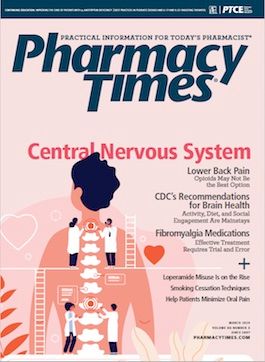Publication
Article
Pharmacy Times
Florida PDMP Demonstrates Positive Results
Author(s):
The efficiency and value of the nation’s Prescription Drug Monitoring Programs (PDMPS) have been questioned from time to time by various groups.
The efficiency and value of the nation’s Prescription Drug Monitoring Programs (PDMPS) have been questioned from time to time by various groups. These have expressed concern about cost, patient privacy, and a potential negative impact on patients who are experiencing pain.
It is sometimes difficult to measure the value of a PDMP. However, I have always been a strong advocate of this valuable resource for dispensers, law enforcement and regulatory agents, and prescribers.
The prescription drug epidemic, especially a few years back, was raging in the state of Florida. Pill mills advertised on billboards, and strip malls were populated with eager drug seekers anxious to visit physicians who only needed cash or a credit card to consummate a drug deal.
Part of the problem was that the PDMP was being vigorously challenged in Florida at a time when it was essential that it be formed. A major drug manufacturer offered significant funds to start the PDMP program, and the powers that be finally relented and it was put in place.
The Florida Department of Health recently released its 2018-2019 annual report on the state’s PDMP, which is known as E-FORCSE (Electronic-Florida Online Reporting of Controlled Substance Evaluation Program).
Report highlights include the following:
- 1% increase in prescriber registrations and 43.3% increase in dispenser registrations
- 50,688,241 queries made by prescribers and dispensers
- 3% reduction in the average morphine milligram equivalents prescribed
- 7% decrease in dispensing of hydrocodone-acetaminophen
- 5% reduction in dispensing of oxycodone SA
- 7% reduction in individuals (doctor shoppers) who have visited 5 or more prescribers and 5 or more pharmacies within a 90-day period
- 455 entities’ electronic health record systems from across the state that have integrated PDMP information into the clinician’s workflow, and
- Interstate data sharing with 16 states and the Military Health System
When they were first implemented in the United States, PDMPs had issues with getting prescribers to sign up. Their participation is important, as they are the first gatekeepers in weeding out drug seekers. Laws were passed requiring that prescribers who write controlled substance prescriptions register with the state’s PDMP. Florida had a 1% increase in prescriber registrations and saw more than 50 million queries by dispensers and prescribers (see first 2 bullet points).
The next three bullet points are related to the reduction in opioid prescribing. This is controversial, because although some people are encouraged by the reduced prescribing or dispensing of these drugs, others are concerned about the effect this may have on patients with pain.
The 7% reduction in individuals who are doctor shopping is significant. E-FORCSE has been most effective in detecting and pursuing those who are drug seekers and who use the system to see multiple prescribers and dispensers to satisfy an addiction or to obtain pills for illegal resale. When dispensers, members of law enforcement, and prescribers access the PDMP on a regular basis, doctor shopping becomes less frequent.
The last item on the list is very important. As I have said many times, a national PDMP would ultimately be a disaster, creating a bureaucracy that is not needed. Sharing information, especially with border states, is the best model for a PDMP operation.
The PDMP has many applications and, if used consistently by dispensers and prescribers, it can be an effective tool to guard against drug seekers. People who are addicted to drugs need effective rehabilitation, and many times that process does not start until they have been uncovered in the system, often with the aid of a state PDMP. At the same time, care needs to be taken to not interrupt the flow of medication to patients in need, who still represent the vast majority of those who are prescribed controlled substances.
CMDR John Burke is a 40-year veteran of law enforcement, the past president of the National Association of Drug Diversion Investigators, and president and cofounder of the International Health Facility Diversion Association.
REFERENCE
Florida Department of Health. 2018-2019 prescription drug monitoring program annual report. floridahealth.gov/statistics-and-data/eforcse/laws-rules/2019-pdmp-annual-report.pdf. Published December 1, 2019. Accessed February 24, 2020.







